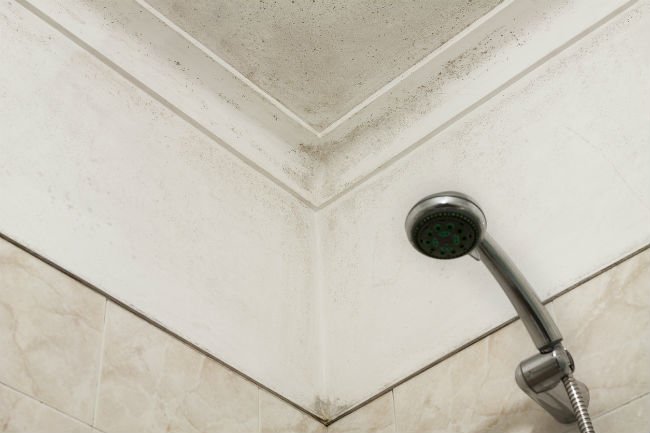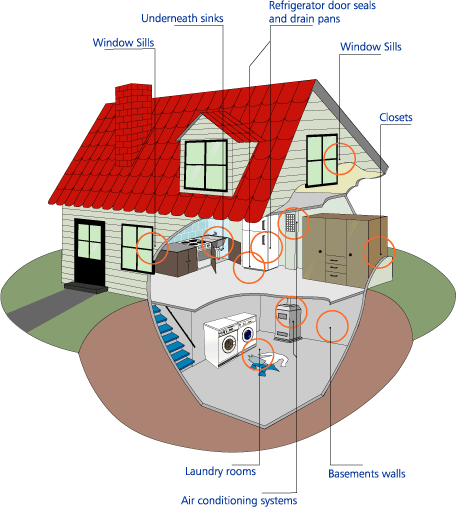There is nothing worse than spotting mold spores in your home. Sometimes it’s a quick and easy situation; like wet bath towels placed against a wall. In other cases, it is much more serious.
Regardless of the situation, you cannot leave mold for later. If left alone, it will spread and become heavier. Let’s take a look at why testing for mold is so important and how you can do it yourself.
Why mold is dangerous
In general, green and black mold are the most common forms. The former are usually found on old foods that have been left out for too long, while the latter like to lurk in damp rooms.
Black mold is the most dangerous of the two, and while molds usually cause most allergy or respiratory problems, they can actually affect those who are perfectly healthy.
If mold spores spread in the air, we breathe them in when we breathe. From there they get into our lungs.
This usually has no effect on healthy people, unless this happens over a longer period of time. However, if you or your family have asthma or allergies, you may have difficulty breathing, rashes, cough, sore throat, and itching. In the most severe cases, it can lead to hospitalization or even death. Mold can also affect our pets’ health and lead to fever, breathing problems and general lethargy.
Fortunately, the mold cleaning process is not as difficult as it seems. There are many great methods you can use to clean all affected surfaces and materials. This is discussed here Instructions for removing mold and mildew.
Why test for mold?
Aside from the fact that mold is referred to as a silent killer (maybe a little dramatic, but something is true), there are a number of reasons why you should take the time to test your home for mold. They are as follows:
- Create a baseline for future mold testing.
- Determine the presence of mold and its severity so you can fix it
- Definition of the renovation parameters
- Find a hidden form that may not be visible to you, but is present in your home
- To prove that all mold has disappeared after a renovation
- To confirm that there is no mold when buying or selling a house
- For testing mold growth after flooding a house or office
- Support a lawsuit for poor living conditions or other such circumstances
These are just a few of the most common reasons why people test for mold. It is important that you understand what is happening to your home, especially if you are experiencing things like moisture.
In addition, it is very important that you have a house tested for mold before you move in and get official results. The damage caused by mold can affect both the structure of your home and your health.
When should you test for mold?
So when is a good time to test for mold? You saw a little in the section above, but there are some good guidelines to follow when going through the testing process.
- If you smell a musty or moldy smell
- After flooding or events that cause water damage
- After a leak that has existed for more than 24 hours
- If you discover an unusual stain on furniture and floors
- If you suspect there is mold but can’t see one
- When members of your home feel uncomfortable for no apparent reason
Bedroom critic recommends investing in a dehumidifier to reduce the smells associated with mold and mildew in your home.
How to test for mold
If you want to save a little money to get the professionals out, you can test for mold yourself. It is not difficult to do, but it is important to remember that professionals have access to better equipment that may be able to detect mold better than at home. Here are the DIY steps you can follow:
- Take a few drops of bleach and apply it to the affected area with a cotton swab. If it gets lighter after a few minutes, you probably have mold. If it stays dark, it’s probably just dirt.
- You can also buy a mold test kit that can help you determine if there is mold nearby. However, it works almost exactly like the method described above and gives you no information about the type of mold or its repair.
- Some mold can cause rotting in your walls and this is very dangerous. Take a screwdriver and use it to examine the area. If it crumbles, mold and fungi are likely to grow inside, causing structural damage.
- Check for hidden leaks. You can usually tell that there is one because mold grows around the pipe. Let the water run and check every moldy stain for moisture. Sometimes the leak is quite far from the pipe, so you need to be thorough.
- Look for outside leaks. You can usually find them on the outside of the building or on your ceiling. These damp areas can be on the roof or near the foundations. You need to carefully inspect the inside of the walls to make sure they’re still safe.
Conclude
Mold is something that should be taken seriously. If you test it, you can keep an eye on the condition of your home, but also nip any problems in the bud. The testing process is fairly simple and can be done by you instead of hiring someone else. Do this sooner rather than later and find out what your home’s health is like.
 TopsDecor.com Home Decor Ideas
TopsDecor.com Home Decor Ideas






